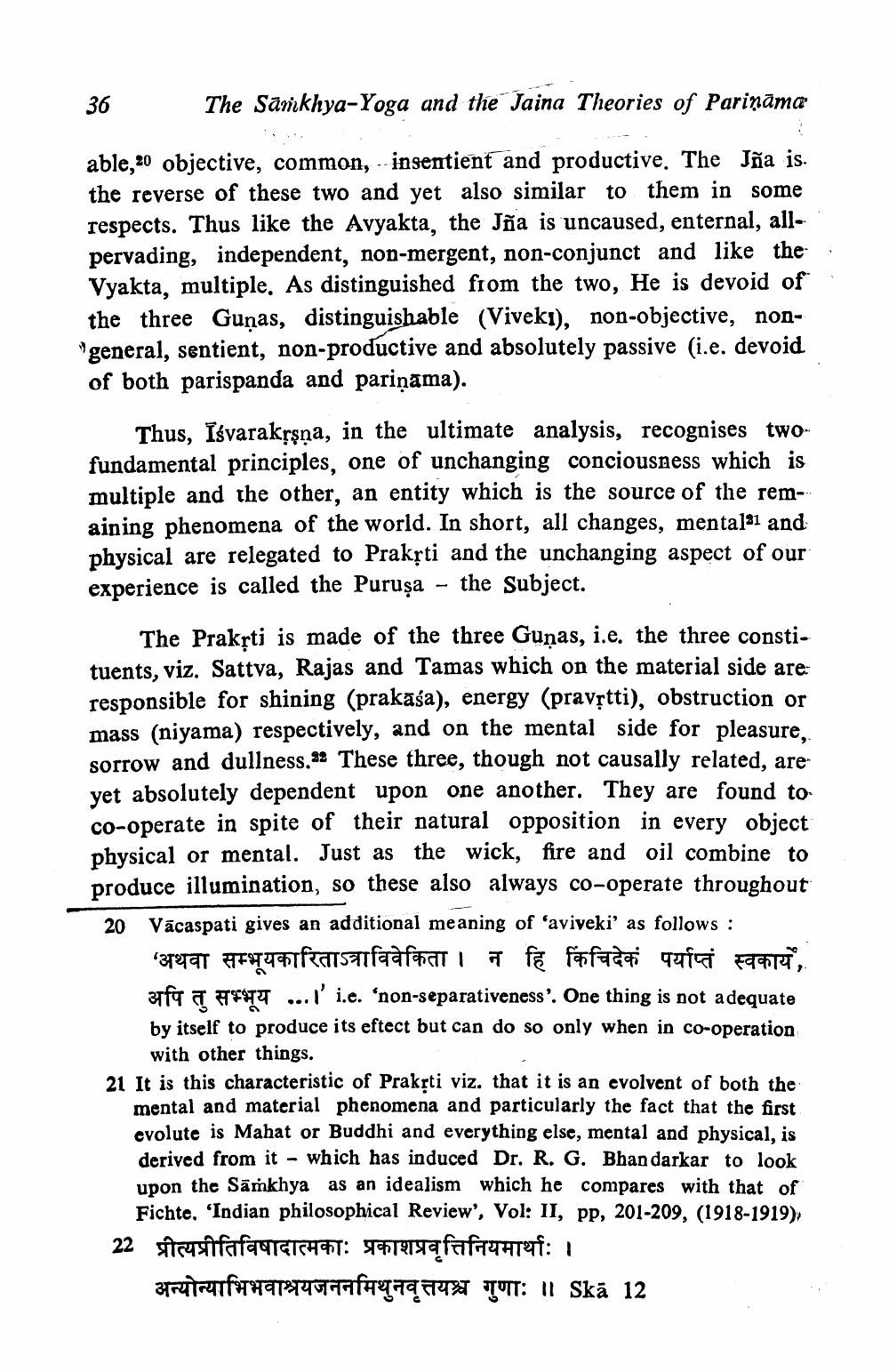________________
36
The Sarikhya-Yoga and the Jaina Theories of Pariņāma
able,20 objective, common, insentient and productive. The Jña is. the reverse of these two and yet also similar to them in some respects. Thus like the Avyakta, the Jña is uncaused, enternal, allpervading, independent, non-mergent, non-conjunct and like the Vyakta, multiple, As distinguished from the two, He is devoid of the three Gunas, distinguishable (Viveki), non-objective, non"general, sentient, non-productive and absolutely passive (i.e. devoid of both parispanda and pariņāma).
Thus, Išvarakrşna, in the ultimate analysis, recognises twofundamental principles, one of unchanging conciousness which is multiple and the other, an entity which is the source of the remaining phenomena of the world. In short, all changes, mental21 and physical are relegated to Prakrti and the unchanging aspect of our experience is called the Puruşa - the Subject.
The Prakrti is made of the three Guņas, i.e. the three constituents, viz. Sattva, Rajas and Tamas which on the material side are: responsible for shining (prakaśa), energy (pravștti), obstruction or mass (niyama) respectively, and on the mental side for pleasure. sorrow and dullness. 22 These three, though not causally related, are yet absolutely dependent upon one another. They are found to co-operate in spite of their natural opposition in every object physical or mental. Just as the wick, fire and oil combine to produce illumination, so these also always co-operate throughout 20 Vācaspati gives an additional meaning of ‘aviveki’ as follows :
'अथवा सम्भूयकारिताऽत्राविवेकिता। न हि किंचिदेकं पर्याप्तं स्वकार्य, 379 T FTTT ...I i.e. 'non-separativeness'. One thing is not adequate by itself to produce its eftect but can do so only when in co-operation
with other things. 21 It is this characteristic of Prakřti viz. that it is an evolvent of bo
mental and material phenomena and particularly the fact that the first evolute is Mahat or Buddhi and everything else, mental and physical, is derived from it - which has induced Dr. R. G. Bhandarkar to look upon the Sāṁkhya as an idealism which he compares with that of
Fichte, 'Indian philosophical Review', Vol: II, pp, 201-209, (1918-1919), 22 प्रीत्यप्रीतिविषादात्मकाः प्रकाशप्रवृत्तिनियमार्थाः ।
artufarmerafaelaran TUT: 11 Skā 12




